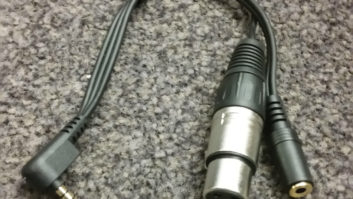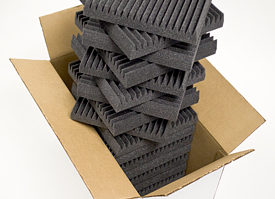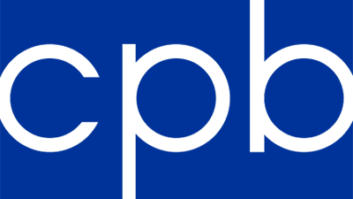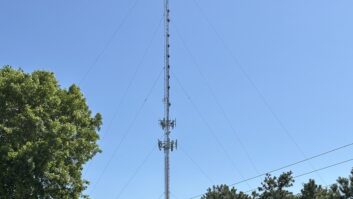This is one in a series of article about trends in broadcast consoles.
Michael Uhl is in sales for Angry Audio and StudioHub. He entered the industry 46 years ago to sell radio broadcast consoles to radio stations. “I’ve represented some of the best brands in the business, and participated in the creation of thousands of studios,” he says. “I’ve seen a lot of changes, but the basic functions remain the same.”

RW: What do you consider the most important recent or ongoing trend console designs?
Michael Uhl: Consoles designed for radio broadcast require some specific features, are easy to operate under pressure and must always perform flawlessly. Remote control and warning light logic, mix-minus feeds, multiple program outputs and monitor feeds distinguish these products from the multitude of mixers made for recording, live sound and content creation. And there’s no “rewind” button with a live show, so the next operation needs to be obvious and it needs to function every time right on the mark.
[Related: “Angry Audio Rolls Out a Radio Console”]
RW: What will the console of the future look like? Will we still even use them?
Uhl: It’s funny, I had a guy tell me that I needed to find a new job because the mixing console would soon be going the way of the buggy whip. That was 30 years ago!
Tremendous strides have been made in the backbone storage and transport systems, and many console companies now offer mixers that run on a tablet or computer screen. But not all radio stations invest in that kind of technology, nor do they have a need to do so.
Live and local still carries weight in many small markets and we will have products to serve their needs. And these consoles will appear pretty traditional and operate just like they always have.
On the other hand, being able to reconfigure your console for different shows gives the operators exactly what they need right in front of them. Individual sources are no longer dedicated to specific faders, and functions you need access to can be made visible while filtering out all the stuff you don’t need. With a touchscreen monitor, the console doesn’t really need to look like a console anymore, we can define a layout that matches the moment. This will be an exciting time for product developers.
RW: Today or soon, how will software- and cloud-based mixing affect the way stations use consoles and surfaces?
Uhl: Small local devices will still be useful as mic preamplifiers and headphone and monitoring outputs. A few other local sources might be handy, and this hardware will need to interface to the network, whether this is a remote studio feeding the cloud or a station studio connected to the local switch. It will need a sliver of the traditional radio board features, with the ease of use and robustness that broadcasters demand.
RW: Are AoIP-based consoles for radio finally truly interoperable? Why or why not?
Uhl: Not yet, but we are actively involved in the process with our partner Logitek. They are already a Livewire partner, and we see an opportunity to integrate consoles into an Axia plant and vice versa. We’ll be looking to provide some of our own products into these hybrid studio systems. And one thing that almost every AoIP console manufacturer has agreed on is the StudioHub+ RJ45 wiring standard. And we make adapters for those that don’t. As for the question of why not — many companies want their products to be the best, others want their products to be the only ones available. Those attitudes don’t often lead to cooperation.
RW: Hybrid and remote workflows are everywhere now. How has this influenced the design of consoles and related infrastructure?
Uhl: This is one of the elements that drove our Rave! console program. And we have started working on several products to support the big AoIP systems from remote locations as well. The pandemic pushed people out of the studios and office environments, and our products are made for this new environment.
RW: Can you give an example of a notable recent installation of your equipment?
Uhl: We helped to save a radio station in Louisiana recently. The university that owned the license was going to sell it off but one of the departments at the school stepped up to take over. They didn’t have a lot of money but needed to build several studios and learning centers for the students. The Rave! and many other AngryAudio products filled the bill with their reasonable cost and ease of use. I’m glad we were there to help.
RW: What does the apparent trend toward centralizing or regionalizing operations portend for radio consoles or studios?
Uhl: Products will continue to be more specialized. Not every studio needs to accommodate large groups and multiple functions. Cloud-based systems will continue to grow in share, but the nature of broadcasting will continue to rely on individuals creating content and delivering it to the program.
RW: What is the marketplace for analog consoles like and how long will manufacturers support them?
Uhl: The demand for small analog consoles remains strong. Digital is a mechanism for the transport and storage of material, but we produce and enjoy that material in an analog world. The console is just a connection to the wired world. The closer you are to the edge, the more analog it needs to be.
Angry Audio has just started shipping our first analog console, and we expect them to be popular for many years because they certainly fill a need that is currently underserved.
And we will support them for as long as we are able. I can remember many times when a part suddenly became unavailable, the designers went back to work to find or create a substitute. When you get into this business, it is for the long haul. Taking care of the client is what we do.
Read more articles in the free Radio World ebook “Trends in Radio Consoles 2025.”







